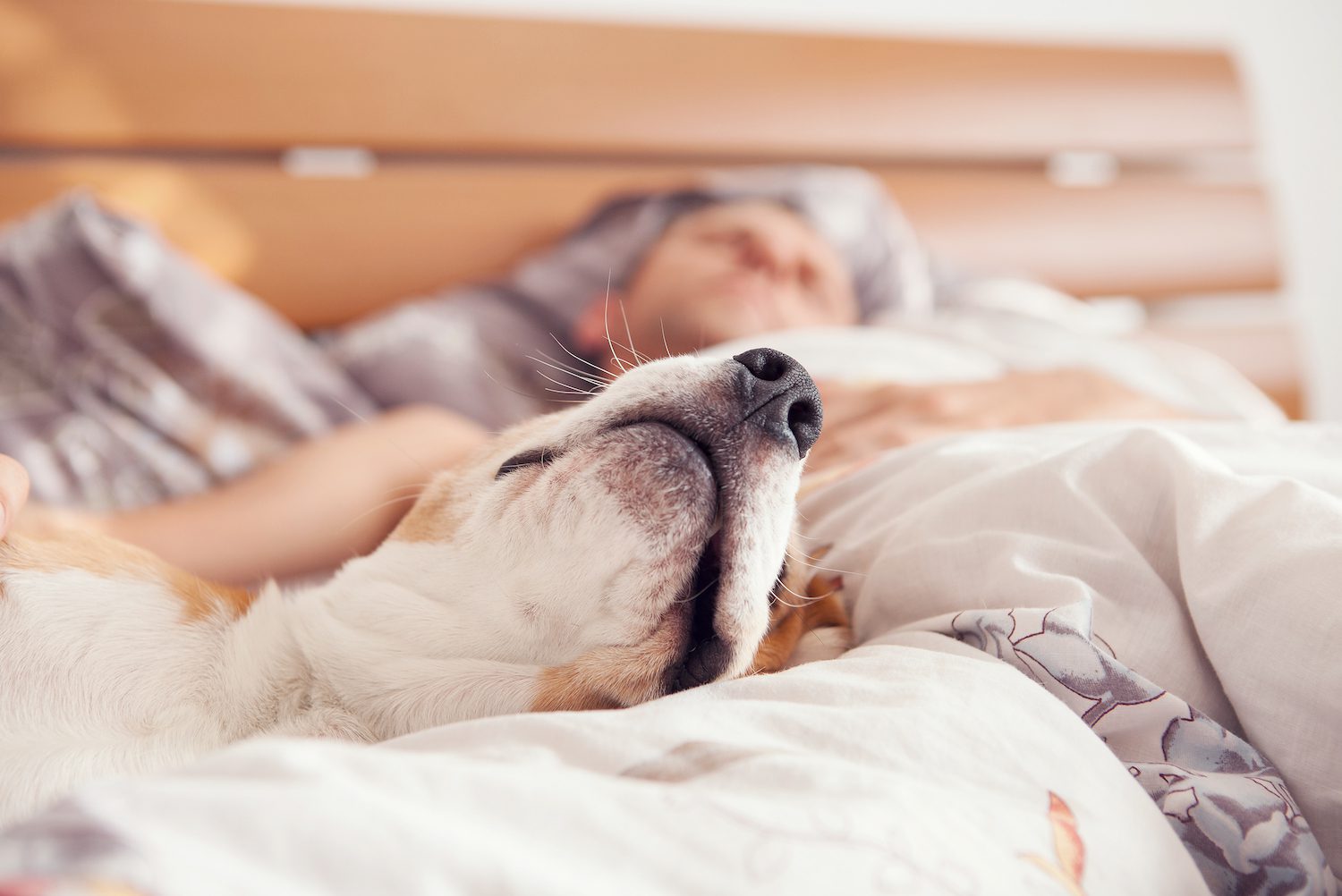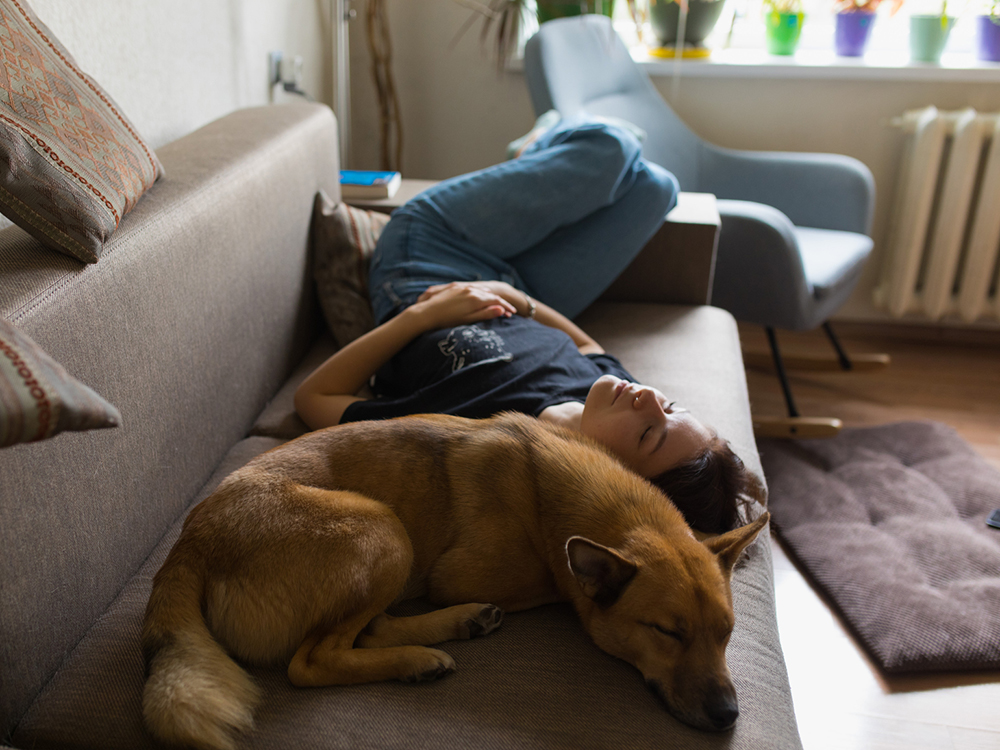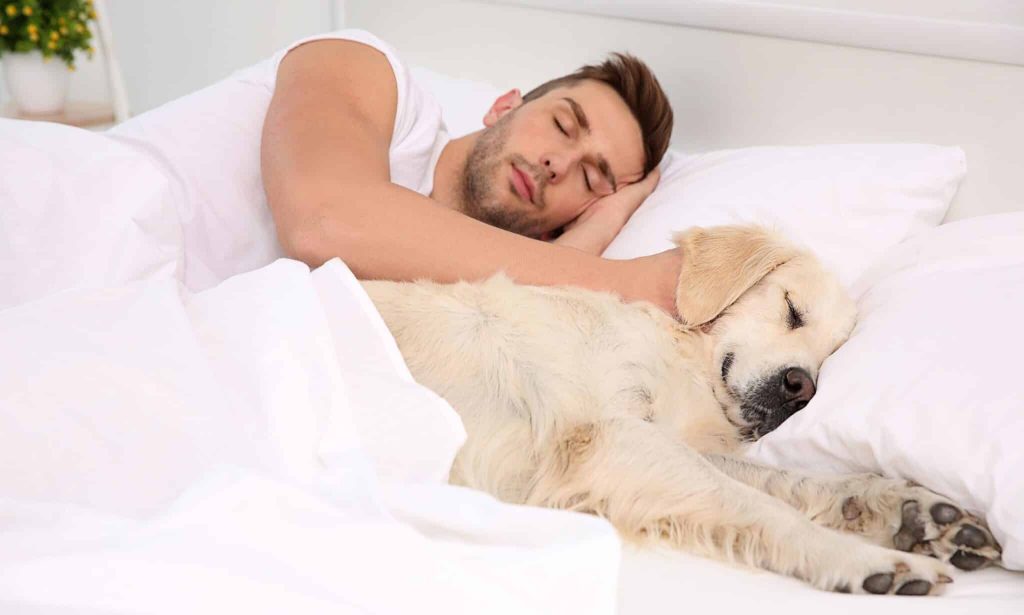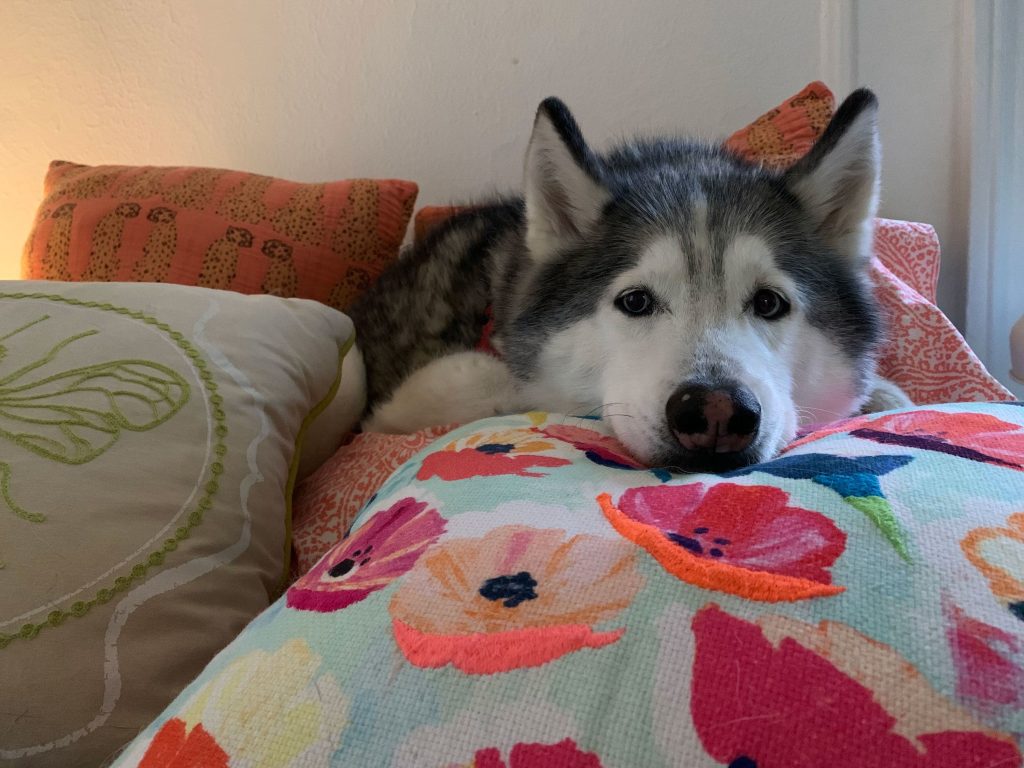Imagine waking up in the morning, refreshed and energized, with a wagging tail and a wet nose greeting you. You can’t help but smile as you realize the undeniable bond between you and your furry best friend. While many owners may wonder if dogs truly enjoy sleeping in their beds, the truth is that the relationship between dogs and sleep runs much deeper than we might imagine. In fact, research has shown that sharing your bed with your canine companion can have numerous benefits for both of you, creating a sense of comfort and security that only strengthens the bond you share. So, the next time you find yourself snuggled up with your pup, remember that it’s not just a cozy arrangement, but a testament to the unbreakable bond between dogs and their human friends.
The Relationship Between Dogs and Sleep
Having a dog not only brings companionship and joy to your life but also has a significant impact on your sleep. Dogs, like humans, have their own unique sleeping patterns and habits. Understanding these patterns and their impact can help you create a healthy sleep environment for both you and your furry friend. In this article, we will explore the various aspects of the relationship between dogs and sleep, including dogs’ sleeping patterns, their impact on human sleep, the benefits of letting dogs sleep in your bed, considerations for dogs in the bedroom, training dogs for better sleep habits, promoting healthy sleep for dogs, and common sleep problems in dogs.
Dogs’ Sleeping Patterns
Dogs’ sleep duration and cycles
Just like humans, dogs go through different sleep cycles. On average, dogs sleep for about 12-14 hours a day, depending on their age and breed. Puppies and older dogs may need even more sleep. The sleep cycles of dogs consist of two main stages: rapid eye movement (REM) sleep and non-REM sleep. During REM sleep, dogs may twitch, move their paws, or even bark, indicating they are dreaming. Non-REM sleep is a deeper sleep phase where dogs experience physical and mental restoration.
Types of sleep dogs experience
Similar to humans, dogs experience both light sleep and deep sleep. Light sleep is characterized by twitching, movement, and being easily awoken. Deep sleep, on the other hand, is a more restful state where dogs are less responsive to external stimuli. It is during deep sleep that dogs experience the most restorative benefits.
Factors that affect dogs’ sleep patterns
Several factors can affect a dog’s sleep patterns. These include age, breed, exercise levels, diet, and overall health. Puppies, for example, tend to require more sleep than adult dogs due to their rapid growth and development. Additionally, certain breeds, such as large and working breeds, may have higher exercise requirements, which can influence their sleep patterns.
Sleeping Habits of Dogs
Preferred sleeping positions of dogs
Dogs have a plethora of sleeping positions, each reflecting their individual comfort preferences. Some dogs enjoy curling up into a ball, while others sprawl out on their sides or backs. Many dogs also enjoy sleeping with their legs stretched out or tucked under their bodies. The position a dog assumes while sleeping can often provide insights into their current level of relaxation and comfort.
Sleeping locations dogs choose
While some dogs have designated beds or crates for sleeping, many canines have the freedom to choose their sleeping locations. This may include your bed, the couch, a favorite spot on the floor, or even a cozy corner of the room. Dogs often select sleeping locations that offer warmth, comfort, and a sense of security.
Sleeping schedules of dogs
Dogs are creatures of habit and often thrive on a consistent daily routine, including their sleep schedule. Establishing a regular sleeping schedule can help dogs feel secure and promote better sleep quality. Maintaining a consistent bedtime and wake-up time can aid in regulating their internal body clock and ensure they get sufficient rest.
Dogs’ Impact on Human Sleep
Positive effects of dogs on human sleep
Research has shown that having a dog in the bedroom can have several positive effects on human sleep. The presence of a dog can provide a sense of comfort and security, promoting feelings of relaxation and calmness before bedtime. This can lead to a faster onset of sleep and a deeper, more restful sleep throughout the night.
Negative effects of dogs on human sleep
While dogs can have positive impacts on human sleep, there are also potential drawbacks. Occasionally, dogs may disrupt sleep by moving around, snoring, or wanting to go outside during the night. This can cause disturbances in sleep patterns, leading to less restful sleep for their human sleeping companions.
Sleep disturbances caused by dogs
Certain behaviors exhibited by dogs during sleep can also disrupt their human counterparts. Dogs may bark, whimper, or even have nightmares, which can startle or wake their owners. Additionally, if a dog is restless during the night, it may prompt their owner to wake up and check on them, further interrupting their own sleep.
Benefits of Letting Dogs Sleep in Your Bed
Bonding and comfort
Allowing your dog to sleep in your bed can strengthen the bond between you and your furry friend. Sharing a sleeping space increases physical closeness and can promote feelings of love, trust, and companionship. This closeness can provide a sense of security for both you and your dog, enhancing your overall sleep experience.
Reduced anxiety and stress
For some dogs, sleeping in their owner’s bed can help alleviate anxiety and stress. The presence of their trusted human companion can provide a sense of reassurance, reducing feelings of separation anxiety or fear. This can lead to a more relaxed state of mind, making it easier for the dog to fall asleep and stay asleep throughout the night.
Improved sleep quality
Studies have shown that sleeping with a dog can actually improve sleep quality for their human counterparts. The rhythmic breathing and gentle movements of a dog can have a soothing and calming effect, promoting a deeper and more restful sleep. This can result in feeling more refreshed and energized upon waking.
Considerations for Dogs in the Bedroom
Allergies and sensitivities
It’s important to consider allergies and sensitivities before allowing your dog to sleep in your bed. Some people may be allergic to pet dander, which can cause respiratory symptoms or skin reactions. If you or your partner have allergies, it may be best to ensure the sleeping environment remains allergen-free by using hypoallergenic bedding and regularly washing linens.
Bed size and space
When deciding whether to let your dog sleep in your bed, consider the size and space available. Larger breeds may take up a significant amount of space, potentially crowding you or your partner. Assess whether your bed has enough room for your dog to comfortably sleep without disrupting your own sleep or causing discomfort.
Sleep preferences and partner
It’s important to discuss and consider your partner’s preferences when deciding whether to allow your dog to sleep in your bed. Some individuals may feel uncomfortable sharing their sleeping space with a dog due to personal preferences or concerns about hygiene. Openly communicate with your partner to ensure that everyone’s needs and preferences are respected.
Training Dogs for Better Sleep Habits
Establishing a dog sleep routine
Establishing a consistent sleep routine for your dog can help promote better sleep habits. Set a regular bedtime and wake-up time for your dog and try to stick to it as closely as possible. Consistency is key to regulating their internal body clock and ensuring they receive the recommended amount of sleep.
Positive reinforcement training
If your dog has any disruptive sleeping behaviors, such as excessive movement or barking during the night, positive reinforcement training can be beneficial. Reward your dog for desired behaviors, such as staying calm and settled, and provide gentle guidance when they become restless or disruptive. With time and patience, you can help shape their sleeping habits into more desired patterns.
Creating a sleep environment for dogs
Creating a conducive sleep environment for your dog is essential for promoting restful sleep. Provide a comfortable and supportive dog bed that suits your dog’s size and sleeping preferences. Ensure the sleeping area is quiet, dark, and free from any distractions or disruptions. Consider using white noise or calming music to drown out any external noises that may disturb their sleep.
Promoting Healthy Sleep for Dogs
Choosing the right dog bed
Investing in a high-quality dog bed is crucial for promoting healthy sleep in your furry friend. Look for a bed that provides adequate support, is the right size for your dog, and is made from breathable materials. Orthopedic beds are especially beneficial for older dogs or those with joint issues, providing extra comfort and support.
Creating a calming sleep environment
Similar to humans, dogs can benefit from a calm sleep environment. Create a designated sleep space for your dog that is free from distractions, such as loud noises or excessive light. Utilize soft bedding, such as blankets or pillows, to create a cozy and inviting sleep environment.
Exercise and mental stimulation
Regular exercise and mental stimulation are vital for promoting healthy sleep in dogs. Engage in daily activities, such as walks or playtime, to help burn off excess energy and keep your dog physically active. Mental stimulation, such as puzzle toys or training exercises, can also help tire out your dog’s mind, leading to a more peaceful and restful sleep.
Common Sleep Problems in Dogs
Canine insomnia
Insomnia in dogs is characterized by difficulty falling asleep or staying asleep. This can be caused by various factors, including underlying health issues, anxiety, or discomfort. If your dog is consistently experiencing sleep difficulties, it’s important to consult with a veterinarian to rule out any underlying medical conditions and develop a treatment plan.
Sleep apnea in dogs
Similar to humans, dogs can also suffer from sleep apnea, a condition characterized by interrupted or paused breathing during sleep. This can lead to restless sleep and may result in symptoms such as excessive daytime sleepiness or loud snoring. If you suspect your dog may have sleep apnea, consult with your veterinarian to explore treatment options.
Restless leg syndrome in dogs
Restless leg syndrome (RLS) in dogs is characterized by involuntary leg movements or twitches during sleep. This condition can be caused by various factors, including nerve damage or discomfort. If your dog is showing signs of restless leg syndrome during sleep, it’s important to seek veterinary advice for a proper diagnosis and appropriate treatment.
Conclusion
The relationship between dogs and sleep is a complex and multifaceted one. Understanding dogs’ sleeping patterns, their impact on human sleep, the benefits of letting dogs sleep in your bed, considerations for dogs in the bedroom, training dogs for better sleep habits, promoting healthy sleep for dogs, and common sleep problems in dogs can help you create a sleep environment that promotes overall well-being for both you and your furry companion. By prioritizing quality sleep and addressing any sleep-related issues, you can ensure that both you and your dog enjoy restful nights and wake up refreshed and ready for each new day.










